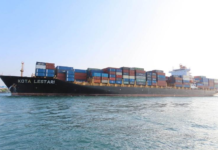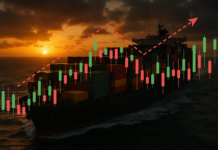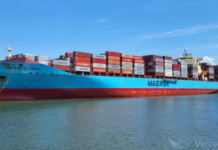
In the week of 2 March 2020, freight rates for exporting containers from China differed from one trade to another, the Japan International Freight Forwarders Associations (JIFFA) has reported.
The Shanghai Containerized Freight Index (SCFI) for the week in question, however, improved 4.7% from the previous week to 911.85 points, according to the Shanghai Shipping Exchange (SSE).
On the European trades, demand weakened much more than expected due to the ongoing outbreak of Covid-19, JIFFA said. As shipping companies controlled tonnage supply, the spot rate for containers from Shanghai, which does not include terminal handling charges (THCs), fell 0.4% to US$827 per TEU (Twenty-foot equivalent unit). The rate for Mediterranean-destined shipments declined mildly, too, going down 1.3% to US$903 per TEU.
On the trade to North America, the balance between supply and demand improved, as operators notably reduced tonnage supply, according to JIFFA. Containers bound for the east coast were moved at a rate of US$2,912 per FEU (Forty Foot Equivalent Unit), up 8.7%, and those for the west coast, US$1,610 per FEU, up 8.3%.
The supply-demand balance was stable for a similar reason on the route to the Middle East Gulf as well, lifting the freight rate by 5.3% to US$1,009 per TEU, adds JIFFA. In contrast, a cutdown in tonnage supply did not work as effectively on the trade to Australia and New Zealand, forcing the fare to decrease 7.7% to US$771 per TEU, according to the Japanese association. Shipping lines made efforts to curtail tonnage on the South America route, too, but they did not lead to improving the supply-demand balance. The rate, as such, sank 7.6% to US$1,460 per TEU.
On the trades to Japan, supply and demand were well balanced, helping the freight rates to Kansai and Kanto both remain unchanged from a week earlier at US$225 per TEU and US$240 per TEU, respectively, according to JIFFA.





